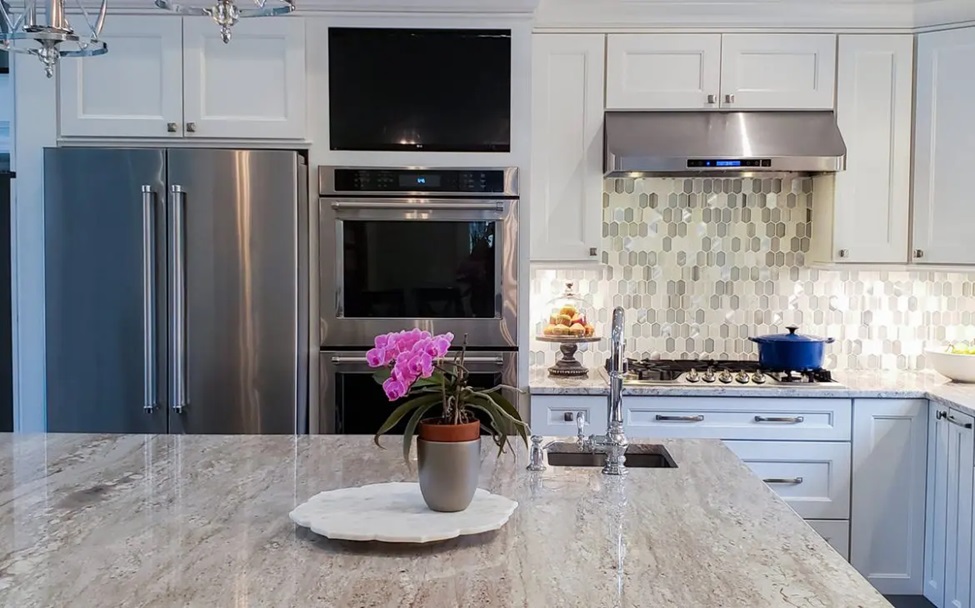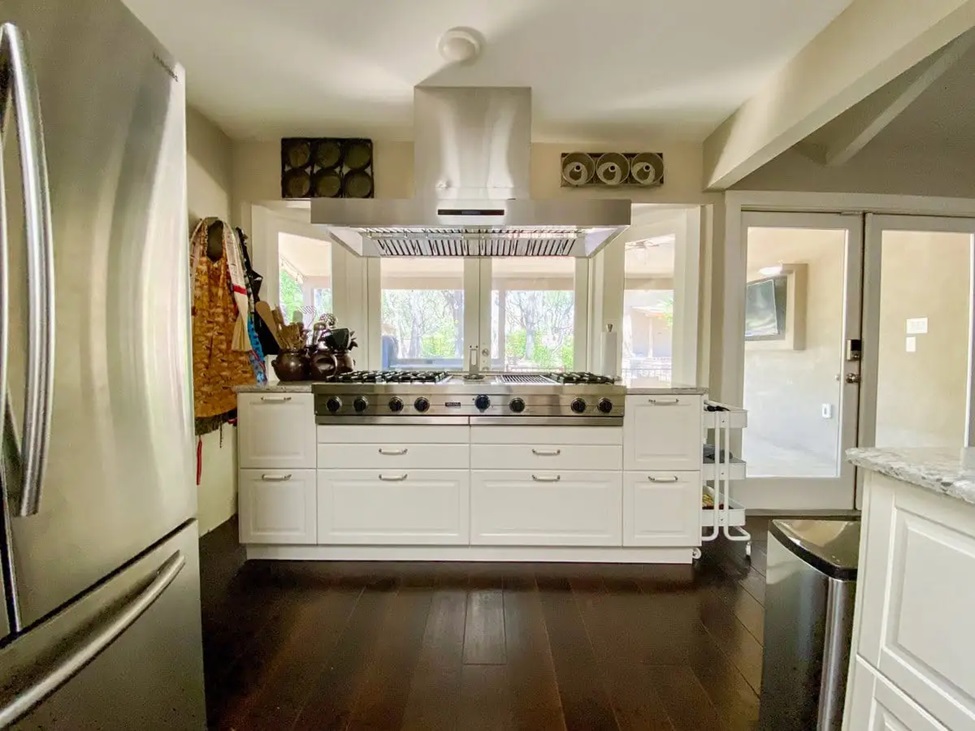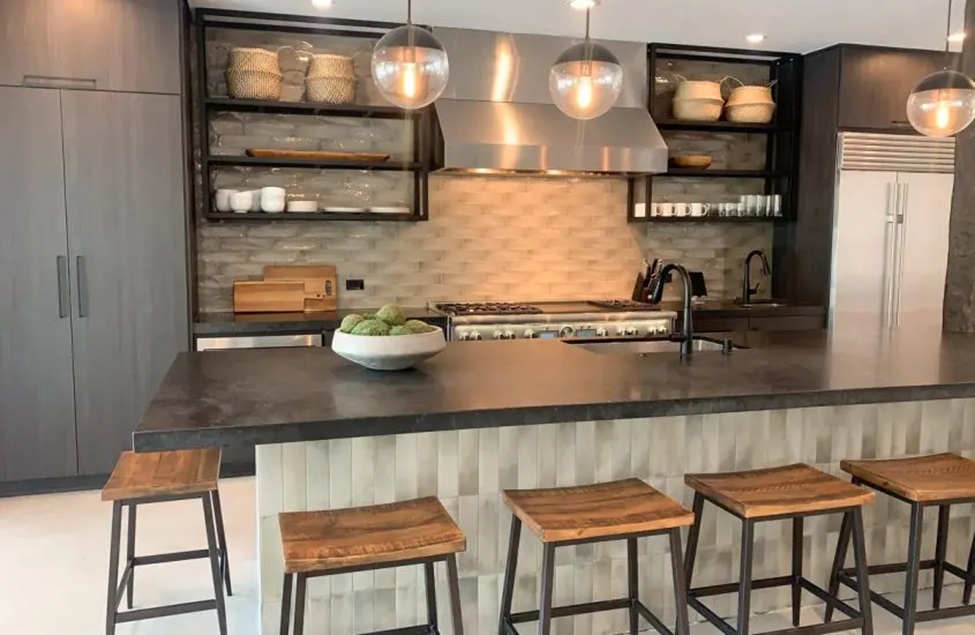Investing in a range hood for your kitchen is a smart decision that can greatly improve air quality and cooking experience. However, to ensure you maximize its benefits, it’s essential to have a good understanding of how it works and how to properly maintain it. Whether you’re in the early stages of oven hood research or have already purchased one, taking the time to learn about key considerations and maintenance tips will help you achieve optimal performance and extend the lifespan of your range hood. By doing so, you can enjoy a cleaner, healthier kitchen environment for years to come.
Choosing the Right Size
Size matters when it comes to range hoods. To ensure effective coverage, your hood should be wider than your range. For indoor hoods, aim for six inches of coverage beyond your range, while outdoor hoods should extend between six to 12 inches. Selecting the appropriate size prevents issues like inadequate ventilation or excess noise.
Ensuring your range hood is the right size for your cooking area is crucial. A hood that’s too small may struggle to effectively capture cooking odors and grease, leading to poor air quality in your kitchen. Conversely, an oversized hood can be noisy and inefficient, wasting energy and creating unnecessary airflow disruptions. Taking accurate measurements and choosing a hood that provides adequate coverage for your cooktop ensures optimal performance and a comfortable cooking environment.
Power Requirements

When selecting a range hood, prioritize power. Opt for a hood with sufficient cubic feet per minute (CFM) to meet your cooking needs. For frequent or high-heat cooking, aim for a hood with a CFM above 900 to ensure efficient ventilation. Remember, it’s better to have more power than you need than to fall short.
The power of your range hood’s motor directly impacts its ability to remove smoke, steam, and cooking odors from your kitchen. Higher CFM ratings indicate greater airflow capacity, allowing the hood to effectively capture and expel pollutants. Consider your cooking habits and the size of your kitchen when choosing a hood’s power rating. If you frequently cook with strong-smelling ingredients or engage in high-heat cooking techniques, opt for a hood with a higher CFM to ensure thorough ventilation and odor removal.
Ducted vs. Ductless
One of the most critical decisions is whether to choose a ducted or ductless hood. Ducted hoods, while pricier, offer superior ventilation by expelling air outside the home. Ductless options are more budget-friendly but may be less effective, especially in heavy cooking environments.
The choice between ducted and ductless range hoods depends on your kitchen layout and ventilation needs. Ducted hoods require access to an exterior wall or roof for duct installation, allowing them to efficiently remove cooking byproducts and odors from your home. While ductless hoods offer flexibility in installation and can be placed virtually anywhere, they rely on filters to trap grease and odors before recirculating air back into the kitchen. Consider factors such as kitchen layout, cooking frequency, and budget constraints when deciding between ducted and ductless options.
Blower Type and Placement

Consider the type and placement of the blower within the hood. Local blowers are installed inside the hood and are louder but more accessible for maintenance. Inline blowers sit within the ductwork, reducing noise levels but requiring careful installation. External blowers, although quietest, are costly and require additional housing.
The blower type and placement play a significant role in the overall performance and noise level
of your range hood. Local blowers are typically installed within the hood itself, making them easily accessible for cleaning and maintenance but may generate more noise due to their proximity to the cooking area. Inline blowers are positioned within the ductwork, minimizing noise while still providing effective ventilation. External blowers, while the quietest option, require additional space and installation considerations but offer superior airflow capacity and efficiency. Consider your kitchen layout, noise tolerance, and ventilation needs when selecting the blower type and placement for your range hood.
Noise Levels
Range hood noise, measured in sones, impacts kitchen comfort. Opt for a hood with variable speeds to adjust noise levels as needed. Higher CFM hoods tend to be louder, but running them at lower speeds mitigates noise while maintaining efficiency.
Noise levels can significantly affect your kitchen’s comfort and ambiance, especially if you frequently entertain or have an open-concept layout. Range hoods with variable speed settings allow you to customize airflow and noise levels to suit your cooking needs. While higher CFM hoods may produce more noise at maximum speed, running them at lower settings can significantly reduce sound levels without compromising ventilation performance. Consider your lifestyle and kitchen environment when selecting a range hood to ensure a comfortable and peaceful cooking experience.
Filter Options
Stainless steel baffle filters are the most efficient choice, capturing grease and dirt effectively. Mesh filters are suitable for ductless models but may be less durable. Charcoal filters are ideal for odor removal in ductless setups but require periodic replacement.
Range hood filters play a crucial role in trapping grease, smoke, and cooking odors, preventing them from circulating back into your kitchen. Stainless steel baffle filters are highly effective at capturing grease and dirt particles while allowing airflow to pass through, ensuring efficient ventilation. Mesh filters are commonly used in ductless hoods and offer adequate grease filtration but may require more frequent cleaning and replacement due to their design. Charcoal filters excel at absorbing odors and volatile organic compounds (VOCs) in ductless setups, but their effectiveness diminishes over time, necessitating regular replacement to maintain optimal performance.
Additional Features
Consider features like automatic fan shut-off for convenience and energy savings. Choose a finish that complements your kitchen aesthetic, such as stainless steel or matte black.
Additional features can enhance the functionality and aesthetics of your range hood, providing added convenience and style to your kitchen. Automatic fan shut-off timers allow you to set your hood to continue running for a specified period after cooking, ensuring thorough ventilation and odor removal even after you’ve finished cooking. Choose a finish that complements your kitchen decor and appliances, such as stainless steel for a modern, sleek look or matte black for a bold, contemporary aesthetic. These features add both practicality and visual appeal to your range hood, enhancing the overall functionality and ambiance of your kitchen space.
Maintenance Tips
Regular maintenance is key to maximizing your range hood’s lifespan and efficiency. Clean filters every three to six weeks and replace them every three to six months for optimal performance. Wipe down the exterior and interior of the hood monthly to prevent grease buildup. Monitor motor performance and clean it if necessary to maintain airflow.
Proper maintenance is essential to ensure your range hood operates efficiently and effectively over time. Regular cleaning and filter replacement prevent grease buildup and airflow restrictions, ensuring optimal ventilation performance and air quality in your kitchen. Wipe down the exterior and interior surfaces of the hood monthly to remove grease and dirt buildup, preventing odors and improving overall cleanliness. Monitor motor performance and clean it as needed to maintain airflow and prevent overheating. By following these maintenance tips, you can prolong the lifespan of your range hood and enjoy clean, fresh air in your kitchen for years to come.





